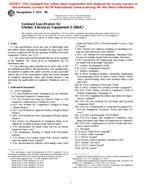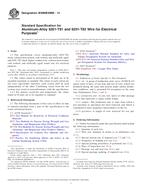1.1 This test method covers specifications for the performance of sports shoe-surface traction measuring devices, but does not require a specific device or mechanism to be used. show schematic diagrams of generic apparatus.
1.2 This test method is appropriate for measuring the effects of athletic shoe outsole design and materials on traction at the shoe-surface interface.
1.3 This test method is appropriate for measuring the effects of sport surface design and materials on traction at the shoe-surface interface.
1.4 This test method specifies test procedures that are appropriate for both field and laboratory testing.
1.5 Traction characteristics measured by this test method encompass friction forces developed between shoe outsoles and playing surfaces.
1.6 Traction characteristics measured by this test method encompass traction achieved by penetration of cleats or studs into playing surfaces.
1.7 This test method specifies test procedures for the measurement of traction during linear translational motion and rotational motion, but not simultaneous combinations of linear and translational motion.
1.8 The loads and load rates specified in this test method are specific to sports activities. The test method is not intended for measurement of slip resistance or traction of pedestrian footwear.
1.9 Test results obtained by this method shall be qualified by the characteristics of the specimen.
1.9.1 Comparative tests of surfaces shall be qualified by the characteristics of the shoes used to test the surfaces, including the cushioning, outsole material, and sole design.
1.9.2 Comparative tests of shoes shall be qualified by the pertinent characteristics of the surfaces on which shoes are tested, including the surface type, material, condition, and temperature.
1.10 This test method does not establish performance or safety criteria. The level of traction required between a sport shoe and surface varies with the level of performance and from individual to individual. The extent to which particular levels of traction contribute to individual athletic performance and risk of injury is not known.
1.11 The values stated in SI units are to be regarded as the standard.
This standard may involve hazardous materials, operations and equipment. This standard does not purport to address all of the safety concerns, if any, associated with its use. It is the responsibility of the user of this standard to establish appropriate safety and health practices and determine the applicability of regulatory limitations prior to use.
Product Details
- Published:
- 12/01/2004
- Number of Pages:
- 9
- File Size:
- 1 file , 120 KB


